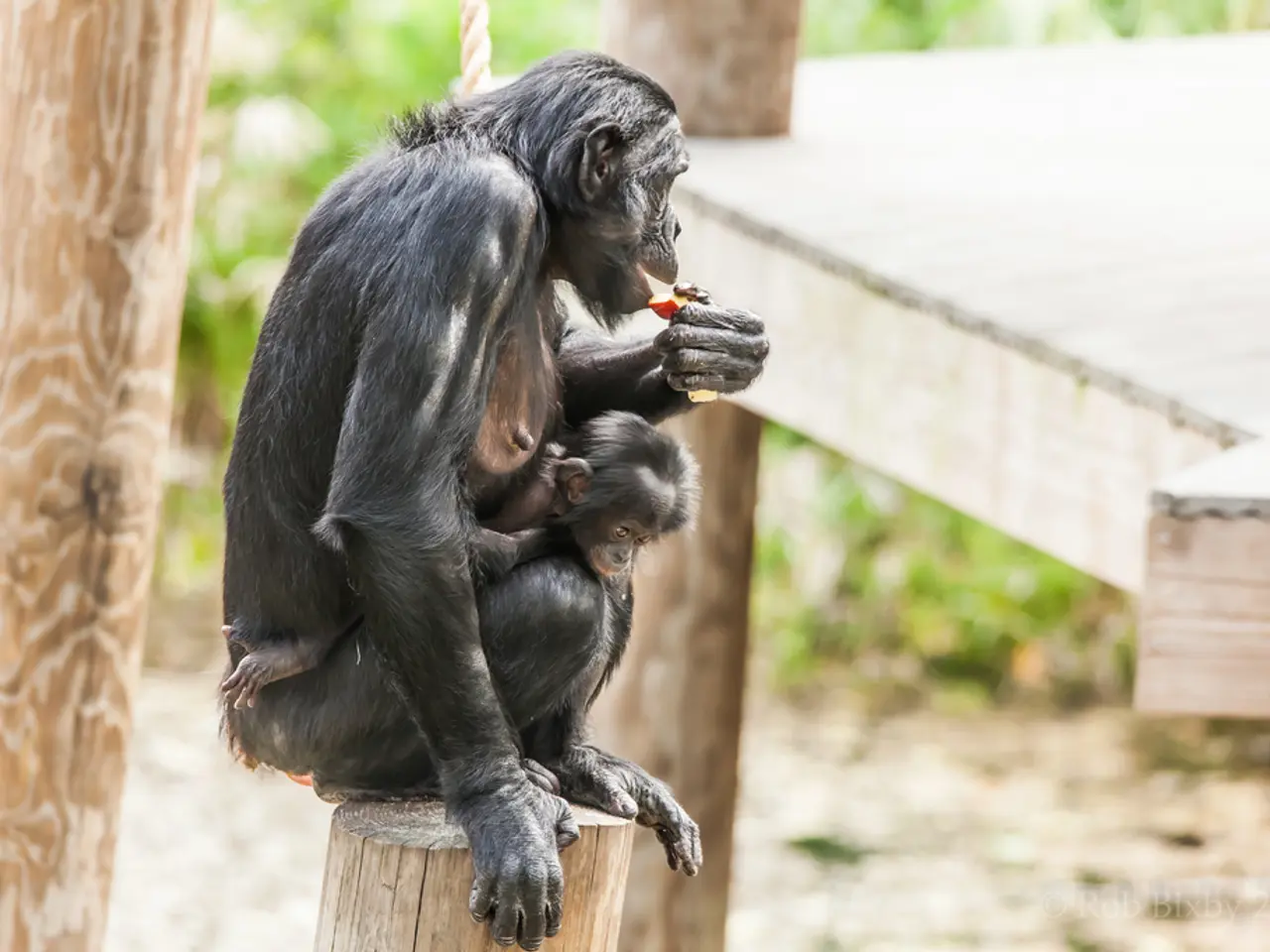Rarity of Alpha Males Amongst Non-Human Primates, According to Scientific Studies
The power dynamics between males and females in human societies have long been a subject of debate, with traditional views suggesting a universal dominance of males. However, a recent study published in the journal PNAS has challenged this notion, suggesting that the truth about primate power dynamics is more nuanced [1][2][3].
The French-German team of researchers analysed interactions between male and female primates across 253 populations and 121 species over five years. Their findings reveal that strict male dominance is actually the minority pattern. Only about 16% to 25% of populations showed males winning over 90% of contests against females. Conversely, female dominance was observed in some populations, and in roughly 70% of groups, there was no clear dominant sex, indicating more balanced or context-dependent power relations [1][2][3].
Key factors influencing female dominance include female monogamy, similar body size to males, arboreal foraging habits, intense female competition over resources, and social structures where offspring can be temporarily left behind safely. Female empowerment tends to rely on reproductive strategies and social leverage rather than physical aggression. On the other hand, male dominance is more typical in species that are terrestrial, where males have larger bodies or weapons and mate with multiple females [1][2].
Interestingly, humans share a mix of traits that place them closer to primate species with more nuanced, flexible sex power relationships rather than strict male dominance. This complexity implies that human gender roles and patriarchy cannot simply be explained as a direct primate legacy but must be understood in relation to social and ecological contexts [1][2].
The study also corroborates what is known about male-female relationships among hunter-gatherers, which were more egalitarian than in agricultural societies that emerged later in human history. This suggests that as societies evolved, power dynamics shifted, leading to the more hierarchical structures we see today [1][2].
Elise Huchard, a primatologist at the University of Montpellier in France, stated that the truth about primate power dynamics is more nuanced. "The results of our study challenge the long-standing assumption that males universally dominate females through physical force or coercion," she said. "Instead, we find that dominance can be exercised by either sex depending on circumstances, strategies, and social environment."
In conclusion, the power relations between males and females in both primates and humans are variable and context-sensitive. The evidence suggests the need to reconsider rigid gender role assumptions, acknowledging that dominance and power can be exercised by either sex depending on circumstances, strategies, and social environment [1][2][3].
References: [1] Huchard, E., et al. (2021). Sexual selection and the evolution of dominance in primates. PNAS. [2] Huchard, E. (2021). Primates challenge traditional views on male dominance. Science. [3] Wrangham, R. W., & Peterson, D. (2006). Demonic males: apes and the origins of human violence. Harvard University Press.
- The study published in PNAS, which focused on primate power dynamics, revealed that male dominance is not universally present, as only about 16% to 25% of populations show males winning more than 90% of contests against females.
- In contrast to traditional views, mental health and health-and-wellness researchers may find it insightful that the power relations between males and females in primates, and potentially humans, are nuanced and context-sensitive, with dominance sometimes being exercised by either sex.








